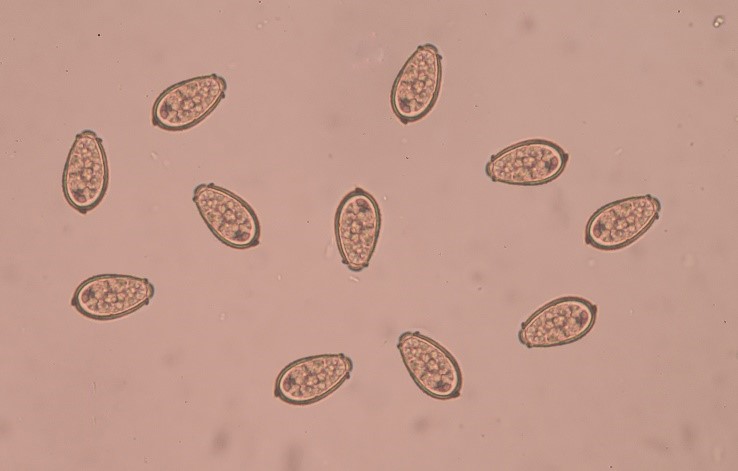Liver Flukes
(Opisthorchis viverrini, Clonorchis sinensis)
Opisthorchis viverrini and Clonorchis sinensis are trematodes of fish-eating mammals including dogs, cats and humans in Asia. Liver flukes are zoonotic.
| Parasite: Opisthorchis viverrini, Clonorchis sinensis |
| Common name: Southeast Asian liver fluke, Chinese or Oriental liver fluke |
| Hosts: Fish-eating mammals such as dogs, cats, pigs, and humans |
| Pre-patent period: 3-4 weeks |
| Location of adults: Bile duct, liver, gallbladder, pancreatic duct |
| Distribution: Southeast Asia and Far East Asia |
| Transmission route: Eating raw or undercooked freshwater fish infected with metacercariae |
| Zoonotic: Yes |
Distribution
Opisthorchis viverrini has been reported in Thailand, Laos, central Vietnam and Cambodia, whereas C. sinensis has been reported in Korea, China, Taiwan and northern Vietnam.
Clinical signs
In most cases, liver fluke infection in dogs is asymptomatic. When clinical signs occur they include lethargy, diarrhoea and dehydration. Migration of immature flukes can cause acute hepatitis and pancreatitis.
Diagnosis
The diagnosis of liver fluke infection in dogs is based on the detection of characteristic operculated eggs with a fully developed miracidium (Fig 1) by faecal sedimentation (SOP 4).

Figure 1 Liver fluke eggs with distinct ‘shoulder’ below the operculum (‘cap’). (Image credit: Shutterstock)
Treatment
Off-label use of praziquantel 40 mg/kg given as a single oral dose is reported effective at killing adult liver flukes.
Control
Owners should be advised not to feed their dog raw or undercooked freshwater fish. For further control options, refer to the General Considerations and Recommendations section.
Public health considerations
Humans become infected through the ingestion of undercooked fish infected with metacercariae of liver flukes. Dogs may act as reservoirs with eggs excreted contaminating the environment and ultimately enabling infection in the fish. Humans infected with liver fluke are mostly asymptomatic, but chronic infection may lead to biliary and hepatic disease and cholangiocarcinoma.
